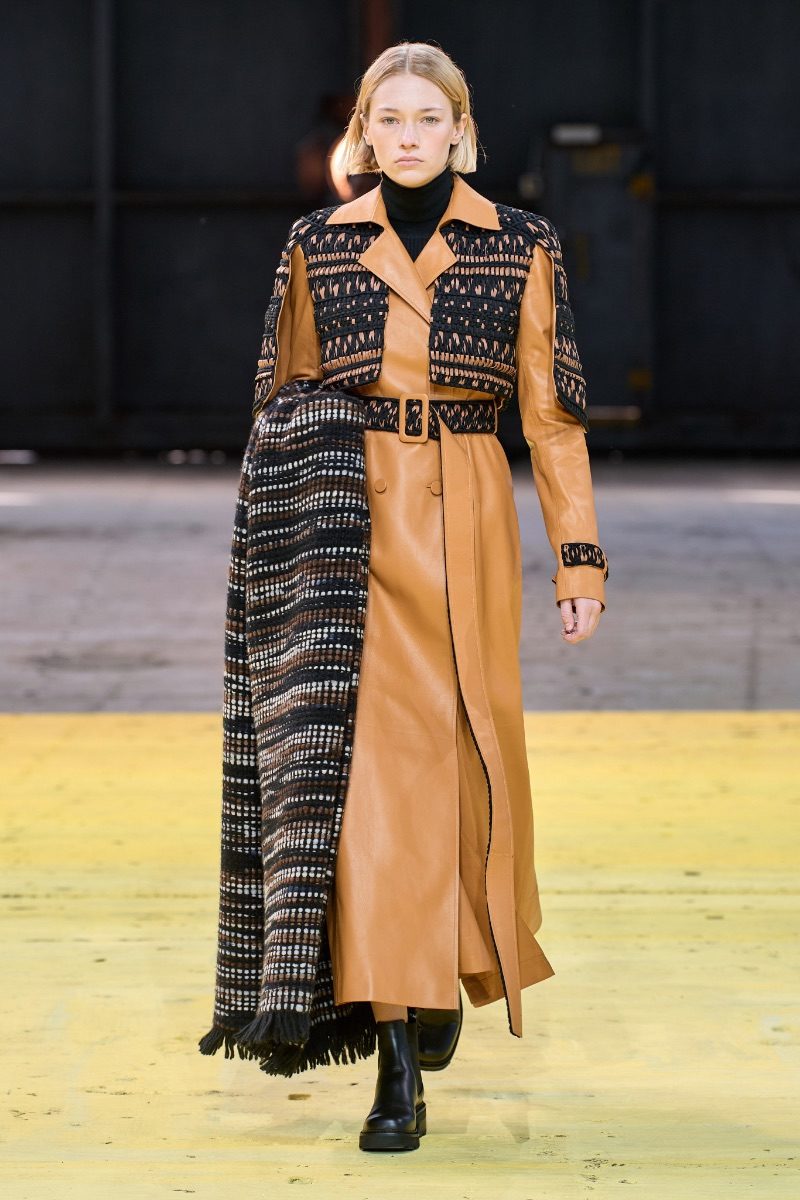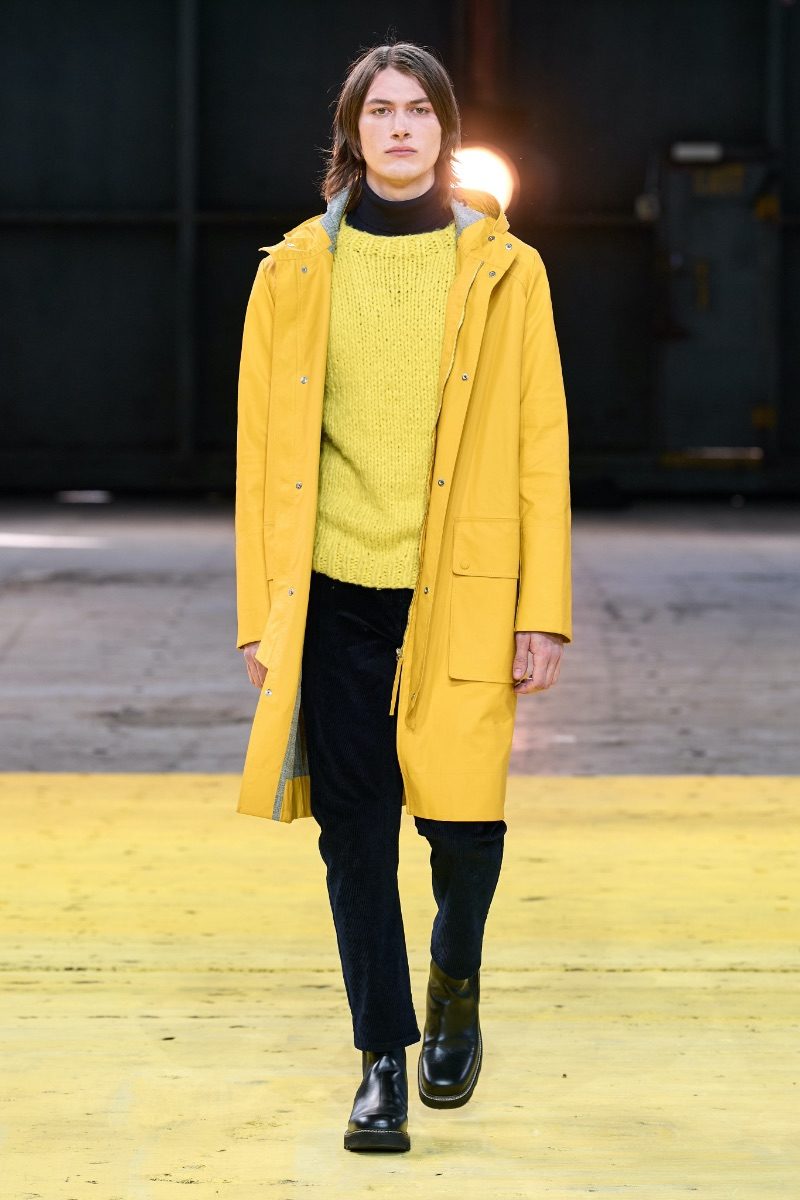For centuries fashion has been a primary tool for establishing and sharpening the gender binary. What happens when that falls away? When both designers and customers reject it? The runways have become a platform for the questioning of gender that has long occupied LGBTQ communities. This has happened at the fringes for decades, but with a new wave of trans and androgynous models recasting our notions of beauty, the project is going more mainstream.
Gabriela Hearst credits her teenage daughters for advancing her own thinking; their conceptions of gender are at odds with the more static understanding that her generation grew up with. “Kids want to be free,” she said at a preview. “For them, gender is an imposition.” As a designer, she makes few distinctions between her women’s and men’s collections. On the runway today, colours, materials, and silhouettes were shared across them, and in the showroom the overlaps were even more apparent.
As is Hearst’s wont, nature was at the heart of her thinking and process. The luscious citrine and watermelon colours of her Manos de Uruguay-knitted chunky cashmere sweaters were achieved via botanical dyes. The print on the cashmere silk knit poncho that was a focal point of the collection was taken from the artist Ana Martinez Orizondo’s painting of a tree. And the crochet motif on a sleeveless dress and a long-sleeve top and midi-skirt was inspired by a peacock’s tail feathers. Safe to say Hearst is the earthiest luxury designer around.
But she can do worldly, too. Amber Valletta closed the show in a double-breasted suit made from sportswear wool whose sharpness belied its comfort factor. Trenches were finished with storm flaps made from panels of woven leather and silk crepe de chine that Hearst likened to armour. She was equally proud to point out that the elaborate pleating on the bodice and sleeves of a flower print dress was done in New York’s Garment District. And then there was the black dress whose voluminous ivory sleeves looked straight out of a Renaissance painting. It’s no coincidence that the Renaissance was another time of challenges to gender duality.

1 / 8

2 / 8

3 / 8

4 / 8

5 / 8

6 / 8

7 / 8






